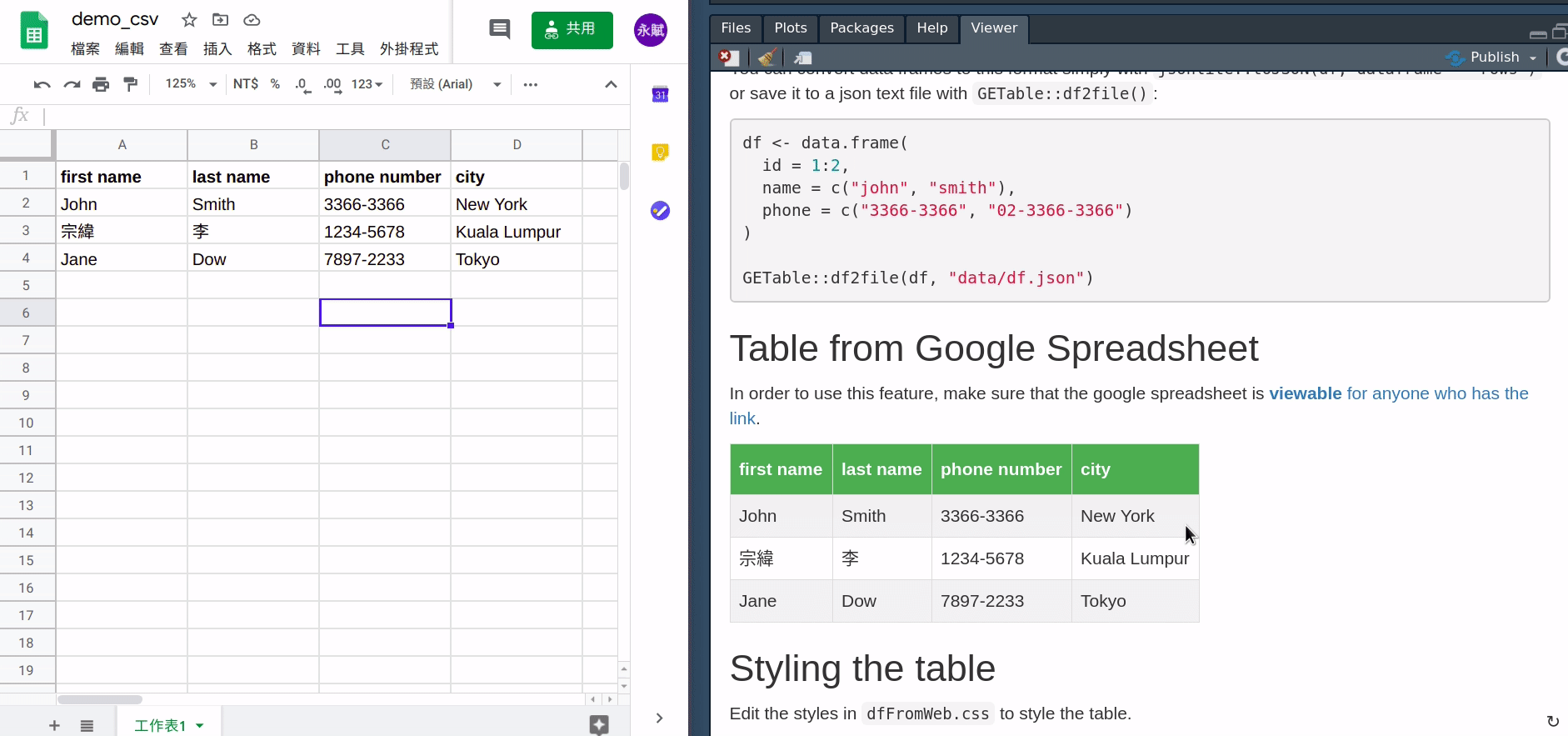Getting Tabular Data Through JavaScript in Compiled R Markdown Documents
Recently, I have learned more about JavaScript and created a few JS web apps. This gave me the idea that we can separate the content and the data in an HTML document to make it more dynamic—the content stays static while the data could be updated independently without rewriting or recompiling the HTML document. This could be done by utilizing JavaScript’s ability to asynchronously fetch data from the web and generate DOM elements based on these data.
I implemented this idea in my new R package getable. Basically, getable lets the user insert dynamic HTML tables in R Markdown (HTML output only) by providing the URLs to the tables’ data. Every time when the compiled HTML document is opened, the data are fetched from the web and used to generate the HTML tables. This means that the user can update the data (e.g., hosted in a public GitHub repo) without recompiling the HTML from R Markdown.
In addition to hosting data in GitHub repos or on static sites, the user could use Google Spreadsheets as the data store, as shown in the GIF below.

Installation
getable is now on CRAN, which can be installed with:
1install.packages("getable")
or, install the latest version from GitHub:
1remotes::install_github("liao961120/getable")
Usage
getable comes with a template that you can import in RStudio by selecting: File > New File > R Markdown > From Template > HTML Tables with Dynamic Data {GETable}.
Or, you can simply run the command below in the R console:
1rmarkdown::draft("name_your_file.Rmd", template = "tablefromweb", package = "getable")
The template contains several files, of which dfFromWeb.html, dfFromWeb.js, and dfFromWeb.css are required for the compiled HTML to work properly (DO NOT change the RELATIVE PATHs between these files and the source Rmd). Note that you can style the appearance of the HTML tables with CSS in dfFromWeb.css, and if you know a lot about JS, you can even modify the code in dfFromWeb.js to use other JS libraries to generate the HTML tables. You can see a working example here.
Inserting Tables
Simply use the function renderTable("<URL>") in a code chunk to insert a dynamic HTML table. Remember to set the chunk option results='asis':
```{r results='asis'}
getable::renderTable("https://yongfu.name/getable/demo/data/df.csv")
```